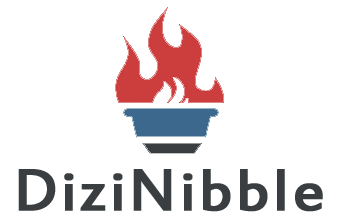Contents:

Typically, the RFQ contains a table that lists each requirement and then asks the vendor to assess its ability to meet that requirement. Given how large a role the RFP plays in enterprise software, it shouldn’t be surprising that many of us have strong feelings on how they should be structured. It is also recommendable that a company may only use one, two, or two or all three in the decision-making process, depending on the pricing requirements, their familiarity with suppliers, process scope, and project deadlines. Are you planning to introduce a project management software solution to your employee? To help you make the right choice, we’ve gathered the best project management web applications. Maintain a few key documents, so you are prepared to respond to any of these documents effectively and efficiently using up-to-date standard information that can be used as a starting point.


Typically, companies use an RFQ when products and services are standardized, or off-the-shelf”. If you’ve worked for any length of time on the vendor side of a B2B business, you’re likely accustomed to receiving RFPs from clients interested in your products and services. Short for “request for proposal,” an RFP is a document that a company searching for enterprise-level services can use to get an overview of offerings and costs from several vendors at once. If a vendor participates in an RFP, it answers a series of questions about the products, services, methodology, and costs that will go into fulfilling the company’s needs. Apart from a short description of the problem, there is usually no design or any documentation.
What is Overbilling? | Construction Industry Accounting
This process filters suppliers who don’t meet requirements or can’t deliver within the given timeline, and it normally follows a format that can be used for comparative purposes. A contract is the final document that you’ve been working toward so you can begin efforts on the new project. A contract serves as a legal agreement that your organization and the other party sign. The contract will specify payments and timing of work to be done, as well as any reporting requirements and the duties of the contracting parties. The RFQ typically includes the pricing details, delivery timeline, line-item pricing breakdown, any assumptions or constraints, supplier contact information, and payment terms. The project manager may work with the financial office to obtain the information needed for the quote and then obtain needed approvals from leadership.
It is the job of the rfi vsrfp manager to assess the bids, the background of the company that wants to bid for the project, and know if the potential companies that bid can undertake the project. The RFI, RFP and RFQ mean a lot in the world of IT outsourcing, where business partners need to collaborate while facing the challenge of geographical disparity, language barriers, time-differences etc. These documents can determine the success or failure of your project. When well-constructed they have a positive effect and can improve further collaboration. One again, a well-prepared RFP template is crucial when encountering the decision-making process. It makes it easier for you and your potential software development partner to create a long-term business relationship and meet your expectations.

If you need a product or service from a supplier, you may come across the terms RFI, RFQ, RFT, and RFP. These are short for Request for Information, Request for Quotes, Request for Tender, and Request for Proposal. RFQs are typically used as supporting documentation for sealed bids (either single-round or multi-round) and may be a logical pre-cursor to an electronic reverse auction. When expanded it provides a list of search options that will switch the search inputs to match the current selection. Only those respondents who prequalify will be allowed to participate in the opportunity’s next round – which could be an RFP, RFQ, or RFT.
So no matter which process you choose, always keep in mind why you are doing this and what is the outcome you expect. Another disadvantage is that, although an RFP process greatly reduces the time of attracting suppliers, it can be seen as a system that undermines competition by inviting only a certain number of bidders. You get a shortlist of potential vendors that you would like to invite to an RFP or RFQ.
It is not unusual for a buyer to put out unclear or vague business requirements for an RFT. This lack of clarity on behalf of the procurement department can make it challenging for the supplier to propose a solution. RFT’s should only be used when the buyer is clear on their requirements, and is also clear on the range of possible solutions that might fit the buyer’s needs, giving the buyer a negotiation advantage. The purpose of launching an RFI process is to explore multiple options before settling on one supplier. Also, having an RFI process in place lets suppliers know that the bidding process will be fair. If companies invited to bid do not have a realistic possibility to win, suppliers will recognize it and participation will ultimately decline.
E.g. After evaluating all three project proposals, K prefers the proposals of two suppliers. Thus, K decides to ask for a quotation from the respective suppliers and sends out an RFQ. An RFP is used where the request demands technical expertise or where the product or service being requested does not yet exist.
vantaggi di RFI (Request for Information)
The https://1investing.in/ may ask several questions to the contractor to assess their experience and trustworthiness. The more complex the project becomes, the more questions the contractor will need to answer. A quick RFI with some basic questions may be sent to multiple contractors, so it is usually best not to spend too much time developing a good response. Unlike an RFQ or RFP, RFIs do not have standard sections but rather requests for responses to certain questions.
It’s a term used to collectively refer to any questionnaire request issued by a buyer to a vendor. News Read about the latest headlines involving our software, customers and company. Client discoveryUncover client requirements to better inform RFPs you issue on their behalf. Evaluation & scoringCollect, score and compare responses in one view to make better decisions.
Why do we need these documents in the IT world?
Your proposal should directly address the customer’s pain points and focus on how you solve them. Oftentimes evaluation committees for RFPs include individuals of all backgrounds, which means you need to make sure your content and story are clear for someone who might not be an expert in what you offer. The request for quotation helps the procuring organization get a picture of what the solution they’re looking for will cost, from a variety of perspectives. These three documents, while similar in their function are still quite different and contribute significantly to the supplier qualification process. Here’s a detailed guide to each document and how they fit into your supplier qualification. To make sure you select the supplier that best fits your business’ needs, you need some critical information.
- The critical thing to remember is that RFQs are all about price and cost.
- He will use all of this information to weigh which contractor to select.
- This may lead to a request for a proposal or a request for a quotation.
- For instance, Cobalt offerscloud migration servicesfor organizations already usingMicrosoft Dynamics 365 products and services.
RFPs detail the customer’s needs and provide the detailed criteria needed to meet the needs. Typical sections include the statement of work, proposal instructions, evaluation criteria, deliverables, and pricing requirements. The purpose of an RFI is to obtain general capabilities information about the types of goods and/or services a vendor provides. RFIs are typically sought when an organization is in the early stage of planning. The top three request documents to support vendor acquisition are request for information , request for quote and request for proposal . Each serves a different purpose and is used in different situations.
For example, if the RFI asks broad questions about a topic where narrowing down would better position your company, you can highlight why it is important to consider that particular topic in your response. At the end of the day, the customer will choose the solution best suited to their needs, but if you believe that your solution is the best, it’s important to show why at this early stage. The request for proposal helps the procuring organization narrow down suppliers based on those that can actually meet their needs and can clearly demonstrate how. A request for quotation is well structured and outlined to offer a clear picture of what exactly the procuring organization intends to acquire. This way, prospective vendors can offer reasonable cost estimates of what they’ll be able to do the work for. Dawn Killough is a construction writer with over 20 years of experience with construction payments, from the perspectives of subcontractors and general contractors.
The RFI is used to explore options before creating a contract for the project. A company or other organization will issue an RFI to gain information about which businesses are best suited to take on the job, as well as meet internal requirements for competitive bidding on all jobs. The existence of an RFI should indicate that the bidding process will be fair to all companies that want to throw their hat into the ring. Examine the RFI carefully to determine if your company can meet its objectives within budget.
The RFP is common with construction projects, consultancy, or services. Usually, an expression of interest is published in newspapers to call interested contractors or consultants for the service. Similar to the RFI, the request for proposal can either stem from an RFI, or originate the process. This is dependent entirely on the procurement team and company preference. This information then allows the procurement department to filter out their vendor-options, customizing the vendors that make the most sense for that individual organization to work with.
An RFQ can also be used sort of like salary negotiation when you’re renewing contracts with current suppliers. In this way, RFIs often generate a buzz among potential suppliers who wish to be put on the procurement team’s radar. For procurement professionals, they’re a helpful tool for building a long list of qualified vendors by asking general information. There are several issues to be taken care of when businesses consider outsourcing software development projects though. Having learnt what solutions available for problems they face, the procuring organization can put their hands down and determine exactly what solution they want to move ahead with. At this stage, the intent is to inform suppliers still in the selection process that, ‘here’s the solution we’re looking to pursue and we’d love a cost breakdown of how much you can offer it for’.
You can be deliberately vague with an RFP, providing space for the respondent to provide their thoughts on how best to design and deliver what you want. Unlike public sector tenders, private sector tenders are not subject to requirements such as having to make the opportunity public or follow particular tender request formulas. It is worth examining some of the requirements the public sector must abide by, such as examining the financial stability of tender applicants to ensure you select the best supplier or manufacturer for your project.

